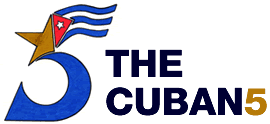This page is also available in: Spanish
By Nancy Kohn
Nearly 400,000 people took to the streets of New York City in the largest Climate March in world history on Sunday, September 21st. The diversity of the crowd and their messages added urgency to the Climate Summit about to take place at the United Nations. A contingent organized by the National Network on Cuba (NNOC) marched in the section called “We Have Solutions” to show people how much we could learn from Cuba if the U.S. government lifted the blockade.
The chance to also introduce environmental activists to the case of the Cuban 5 was taken up by co-chairs and activists from the NNOC, Pastors for Peace, the International Committee for the Freedom of the Cuban 5 and supporters from Oklahoma, Minnesota, Massachusetts, New York and Connecticut. The group distributed nearly 2,000 flyers with the slogan, “Change U.S. Climate toward Cuba!”
The contingent marched just in front of the World Wildlife Fund, which in 2006 designated Cuba as the “only country in the world to have achieved sustainable development.” One side of the leaflet described how Cuba has become a world leader in ecological, organic and urban agriculture. The other side explained who the Cuban 5 are and pointed out that besides the economic embargo, the U.S. has also imposed an information blockade that explains why the vast majority of people in the U.S. had never heard about Cuba’s agricultural successes or the Cuban Five.
The banners and flyers were met with a combination of curiosity and support. A surprising number of people said they had visited Cuba. One marcher from Nova Scotia took a flyer and said he knew all about the Five because his book group had just discussed Stephen Kimber’s awarding winning book “What Lies Across the Water: The Real Story of the Cuban Five.”
U.S. activists in solidarity with Cuba were able to bring to this historic march the example of Cuba which has created an alternative model of development that places ecology and humanity at its core. In addition, they were able to publicize the case of the Cuban 5 that has become the most important issue for normalizing U.S.-Cuba relations.






 English
English Español
Español

